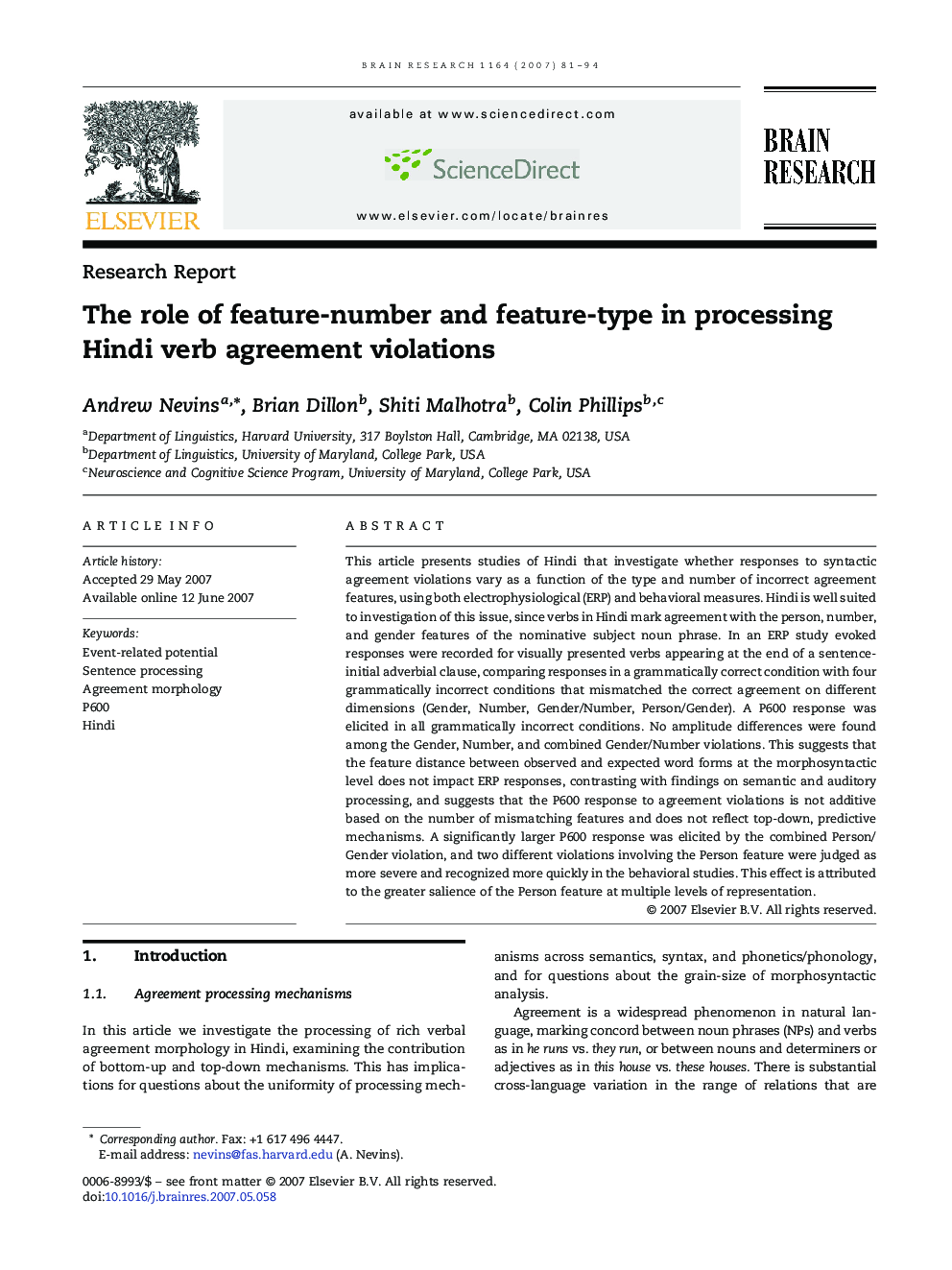| Article ID | Journal | Published Year | Pages | File Type |
|---|---|---|---|---|
| 4330819 | Brain Research | 2007 | 14 Pages |
Abstract
This article presents studies of Hindi that investigate whether responses to syntactic agreement violations vary as a function of the type and number of incorrect agreement features, using both electrophysiological (ERP) and behavioral measures. Hindi is well suited to investigation of this issue, since verbs in Hindi mark agreement with the person, number, and gender features of the nominative subject noun phrase. In an ERP study evoked responses were recorded for visually presented verbs appearing at the end of a sentence-initial adverbial clause, comparing responses in a grammatically correct condition with four grammatically incorrect conditions that mismatched the correct agreement on different dimensions (Gender, Number, Gender/Number, Person/Gender). A P600 response was elicited in all grammatically incorrect conditions. No amplitude differences were found among the Gender, Number, and combined Gender/Number violations. This suggests that the feature distance between observed and expected word forms at the morphosyntactic level does not impact ERP responses, contrasting with findings on semantic and auditory processing, and suggests that the P600 response to agreement violations is not additive based on the number of mismatching features and does not reflect top-down, predictive mechanisms. A significantly larger P600 response was elicited by the combined Person/Gender violation, and two different violations involving the Person feature were judged as more severe and recognized more quickly in the behavioral studies. This effect is attributed to the greater salience of the Person feature at multiple levels of representation.
Related Topics
Life Sciences
Neuroscience
Neuroscience (General)
Authors
Andrew Nevins, Brian Dillon, Shiti Malhotra, Colin Phillips,
